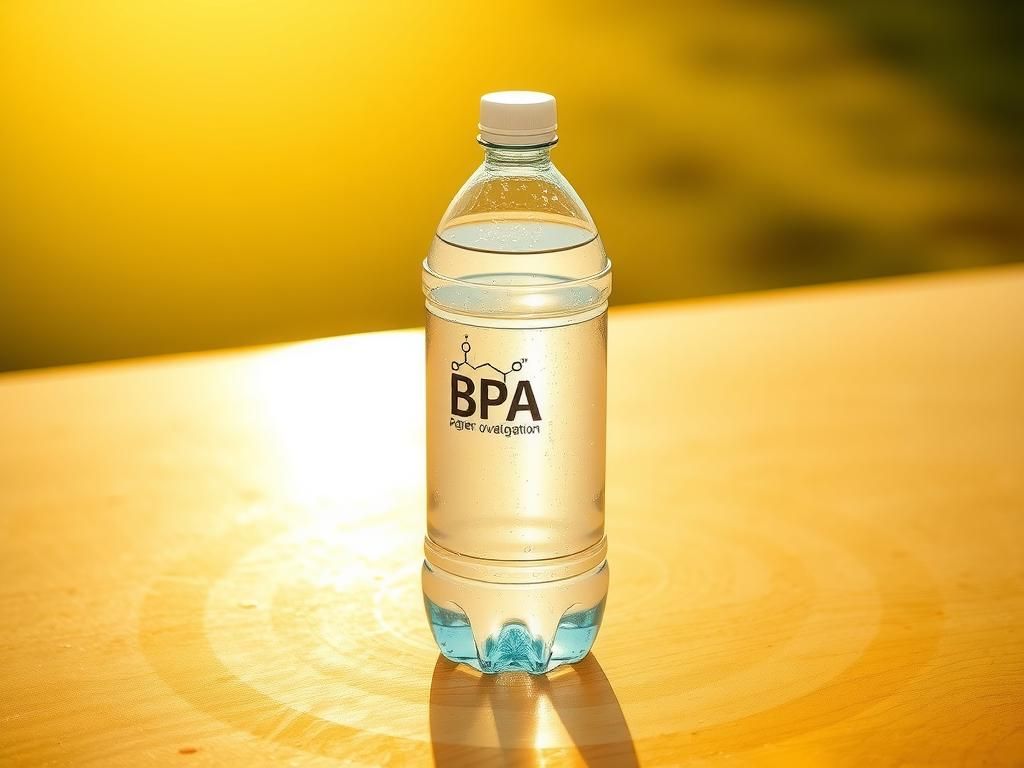Are You Unknowingly Exposed to BPA in Your Favorite Drinks?
BPA, or bisphenol A, is a common chemical that lurks in many of our everyday plastic drink containers. These containers, particularly plastic water bottles, can leach BPA into your beverages, raising serious health concerns. Understanding where BPA hides is crucial for protecting yourself and your family from its harmful effects. Let’s explore why your plastic water bottle could be leaching BPA into your drink and how you can make safer choices.
What is BPA and Why is it a Concern?
BPA is an industrial chemical primarily used in the production of polycarbonate plastics and epoxy resins. These materials are commonly found in many food and drink containers, including those you use daily.
Research shows that BPA can mimic estrogen and disrupt endocrine functions, leading to potential health issues such as:
Recognizing how prevalent BPA is in our lives is the first step in avoiding it. Studies have detected BPA in the urine of over 90% of people tested, indicating widespread exposure . But what does this mean for your favorite drinks?
How Plastic Water Bottles Leach BPA into Your Drinks
Plastic water bottles are convenient; however, they often contain BPA, especially those made from polycarbonate plastics. When these bottles are exposed to heat or prolonged wear and tear, the chemical can leach into the water you drink.
Here are some factors that increase the risk of BPA leaching:
A case in point is a personal experience shared by many who have transitioned away from plastic. They notice a marked difference in taste and quality when switching to stainless steel or glass containers, which don’t leach harmful substances over time.
Alternatives to BPA in Your Drink Containers
If you’re concerned about BPA in drink containers, there are several simple alternatives you can adopt.
Consider these safer options:
Making these switches is beneficial not only for your health but also for the environment. By reducing plastic consumption, you are actively participating in reducing plastic pollution.
Tips for Reducing BPA Exposure in Daily Life
It’s empowering to know that you can take actionable steps to minimize your BPA exposure. Here are some practical tips:
Every little change adds up, helping you create a healthier lifestyle.
Even with these changes, awareness is crucial. Educating yourself and those around you about the presence of BPA in drink containers is an essential part of reducing health risks.
Understanding BPA Regulations and Safety Practices
It’s natural to wonder about the regulations surrounding BPA and drink container safety. In many countries, restrictions have been placed on BPA in baby bottles and sippy cups due to the heightened vulnerabilities of infants and children. However, many adult products still contain BPA, which leads to ongoing debates about its safety.
Staying informed can guide your choices. Resources such as the Environmental Protection Agency (EPA) provide essential information about chemical regulations and safety practices. Always check official guidelines to ensure you are making the most informed decisions.
There is hope in the growing trend of awareness and demand for BPA-free products. Consumers are pushing manufacturers to adopt better practices, leading to more options for those wanting to avoid toxic chemicals in their everyday lives.
Do your best to stay ahead of the curve. By choosing safer materials for your drink containers and being informed about BPA, you can significantly reduce your risks.
When it comes to BPA in drink containers, knowledge is your best ally in championing your health.
Frequently Asked Questions
What are the health effects of BPA exposure?
BPA exposure has been linked to hormonal disruptions, reproductive issues, and metabolic disorders, among other health concerns .
Are all plastics harmful, or just those with BPA?
Not all plastics contain BPA, but many can leach harmful chemicals. It’s vital to check labels for BPA-free materials and consider safer alternatives.
Can I reuse my plastic water bottle?
While it’s best to avoid reusing single-use plastic bottles, if you do choose to reuse them, ensure they are labeled as safe for multiple uses, and store them in a cool, dry place to limit heat exposure.
Always prioritize your health by being informed about BPA in drink containers. Your journey to a healthier lifestyle starts with conscious choices.


